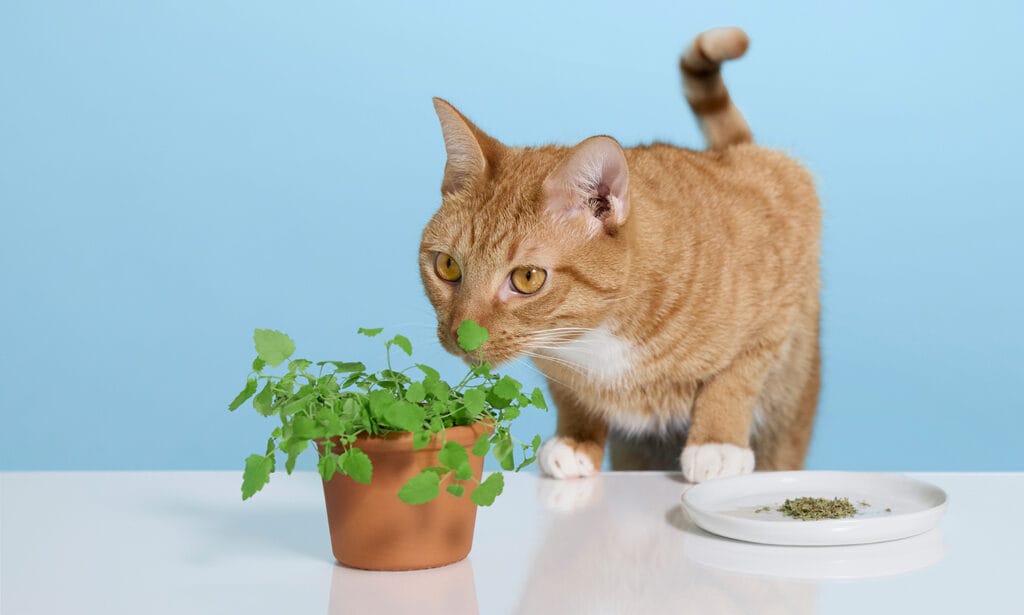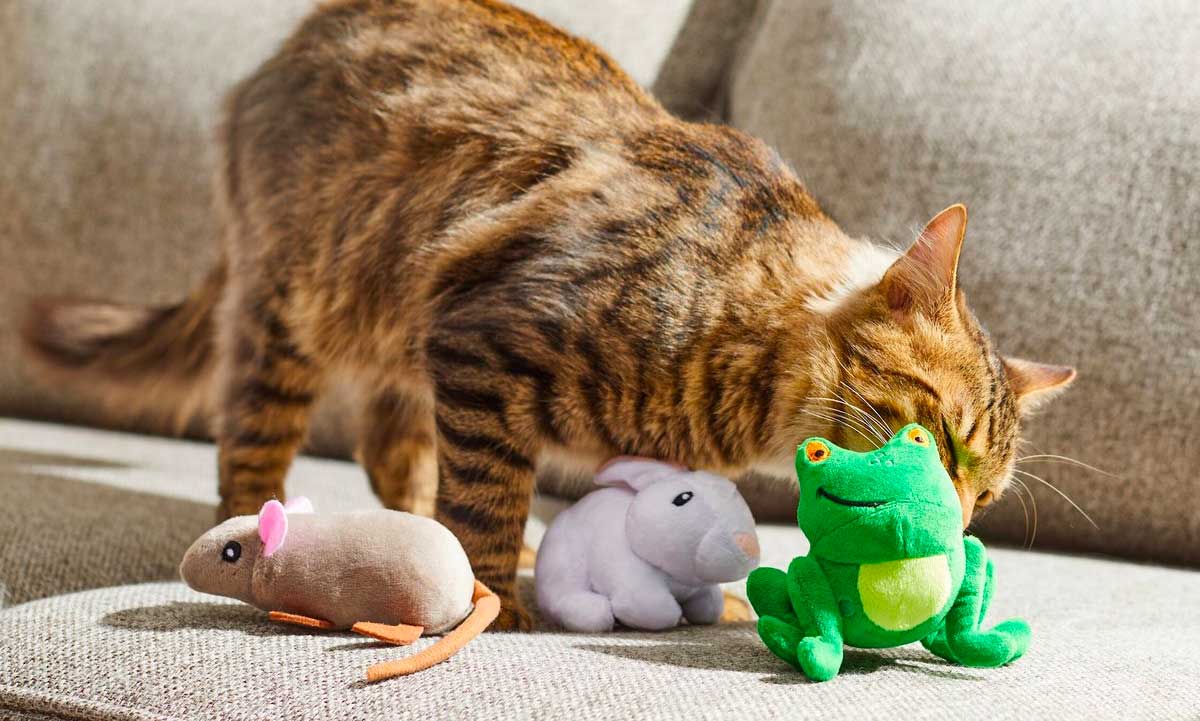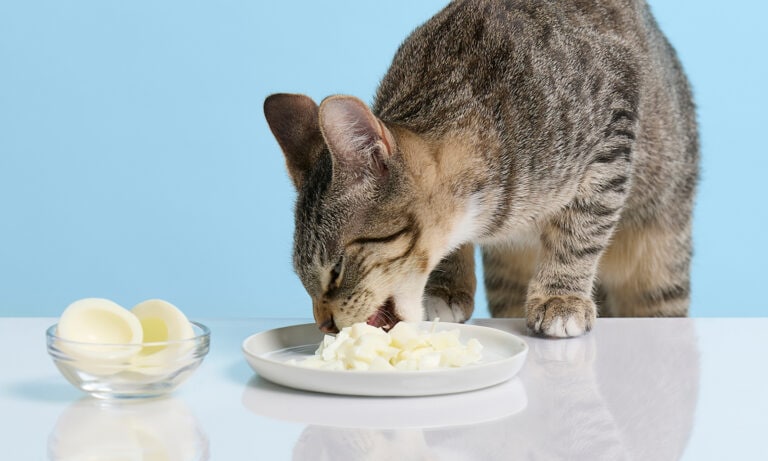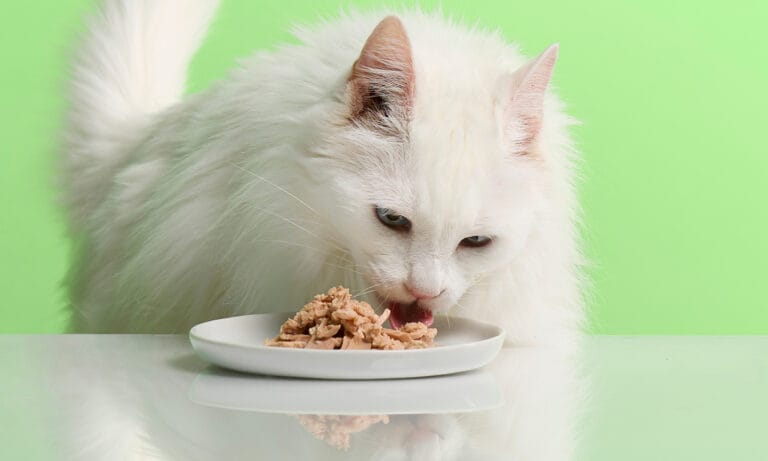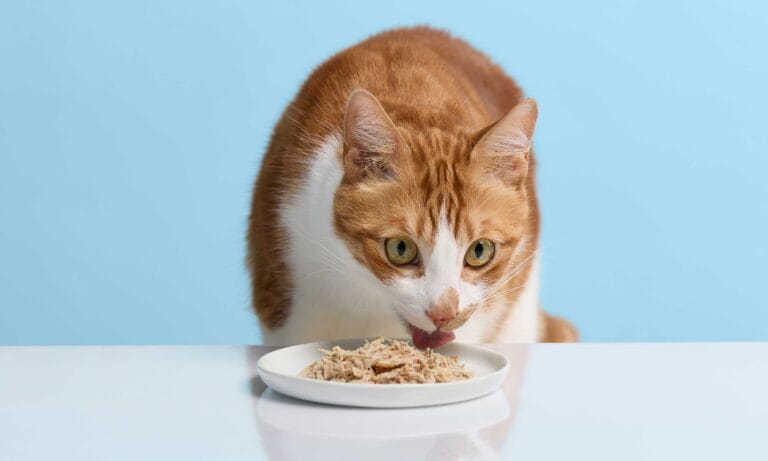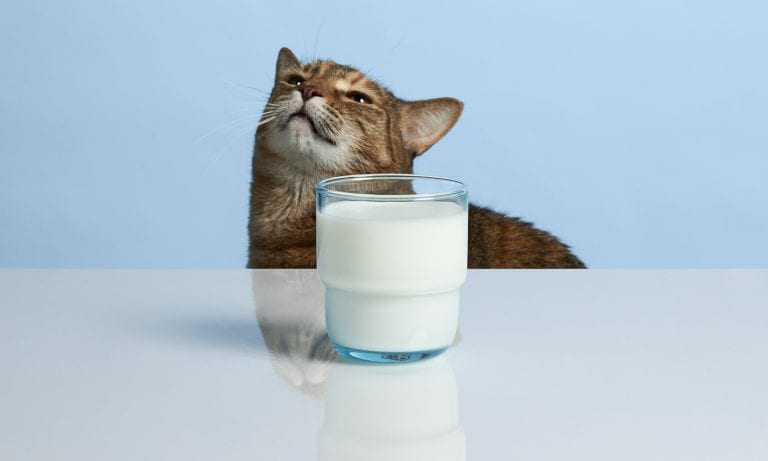Yes! Cats can eat catnip; and for most cats, catnip provides a holistic, relaxing experience for your cat in a condensed, cost-effective, easy-to-store form.
We spoke to a vet expert about what cat parents need to know about giving their cats catnip.
Before introducing catnip into your cat’s diet and/or playtime, consult with your veterinarian to see if they have any recommendations for products they think your cat specifically will respond well to and if there are any they advise you to avoid based on your cat’s activity level, personality and health.
How Much Catnip Can a Cat Eat?
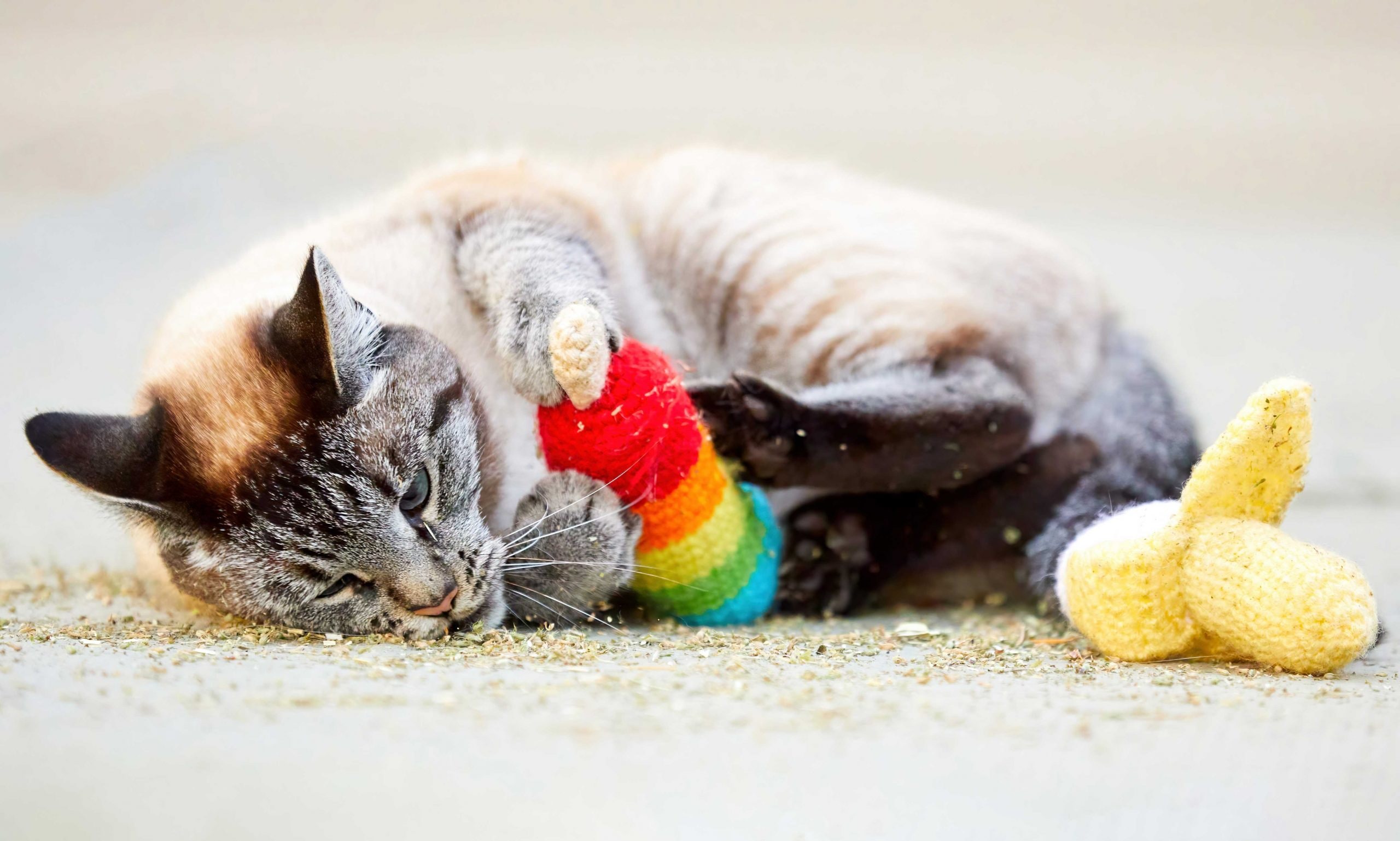
“I would always strive for moderation in everything I give my pets, and catnip is no different,” says Dr. Michael Robinson, DVM, vetenierarian and co-owner of Pack Animal Care in Lorton, Virginia.
If your cat is showing a desire for more, you can give another pinch or two, but Dr. Robinson wouldn't suggest using more in one session, as it's likely to have diminishing returns the more you use.
Safety is more of an issue when giving your cat access to fresh catnip. Ingesting large amounts of the fresh or dried variety may risk stomach upset, Dr. Robinson says. And if you grow it yourself, he recommends breaking off a stem or two per session, “unless your cat has learned moderation of plant chewing from being an outdoor cat.”
How Do I Give Catnip to Cats?
- You can give as a treat: But remember, don’t give them too much! Start with a pinch. Treats should not make up more than 10 percent of your pet's diet (and if your pet is overweight, it should be even less than that). For example, if your pet needs 200 calories per day, they should have no more than 20 calories from treats. Feeding too many treats can lead to nutrient deficiencies, and treats should never replace your cat’s food. If your pet has health issues or if you have any concerns, consult your pet’s veterinarian before offering any new treats.
- Add catnip to a homemade recipe: If your cat enjoys eating catnip, consider whipping up a recipe that includes catnip as an ingredient, like our Mini Fish Tacos.
- Let them play with catnip-infused toys: If catnip causes your cat to become playfully aggressive, purchase a catnip-infused toy or a dispensing toy to engage your cat’s prey drive.
- Let them roll around in catnip (if you don’t mind cleaning up after them!): This is why messiness is listed as one of the very few downsides. Have a vacuum or dustbuster handy if your cat plays with catnip by rolling in it. Dr. Robinson suggests buying loose leaves for them to roll in.
- Let them smell it: Yep, some cats like to intensely smell catnip. Get a catnip-infused scratcher, like the SmartyKat Scratch Up+ post with catnip infusion technology. When they scratch the post each day, it’ll release the scent that they enjoy breathing in. Catnip can also be sprayed from a bottle on items such as scratchers, toys, bedding and more for your cat to inhale. One to two pumps of the mist is enough to activate your cat’s vomeronasal receptors, but some cats require three or four pumps. Although additional spritzes are not harmful to a cat, Dr. Robinson says you won’t see an added reaction and instead recommends waiting a few hours and starting again with a fresh play session.
While most potent as a freshly grown plant, dried catnip is convenient for cat parents to always have on hand. It's best to keep dried catnip in an air-tight container in the freezer as the oil and smell lose their potency over time, Dr. Robinson suggests.
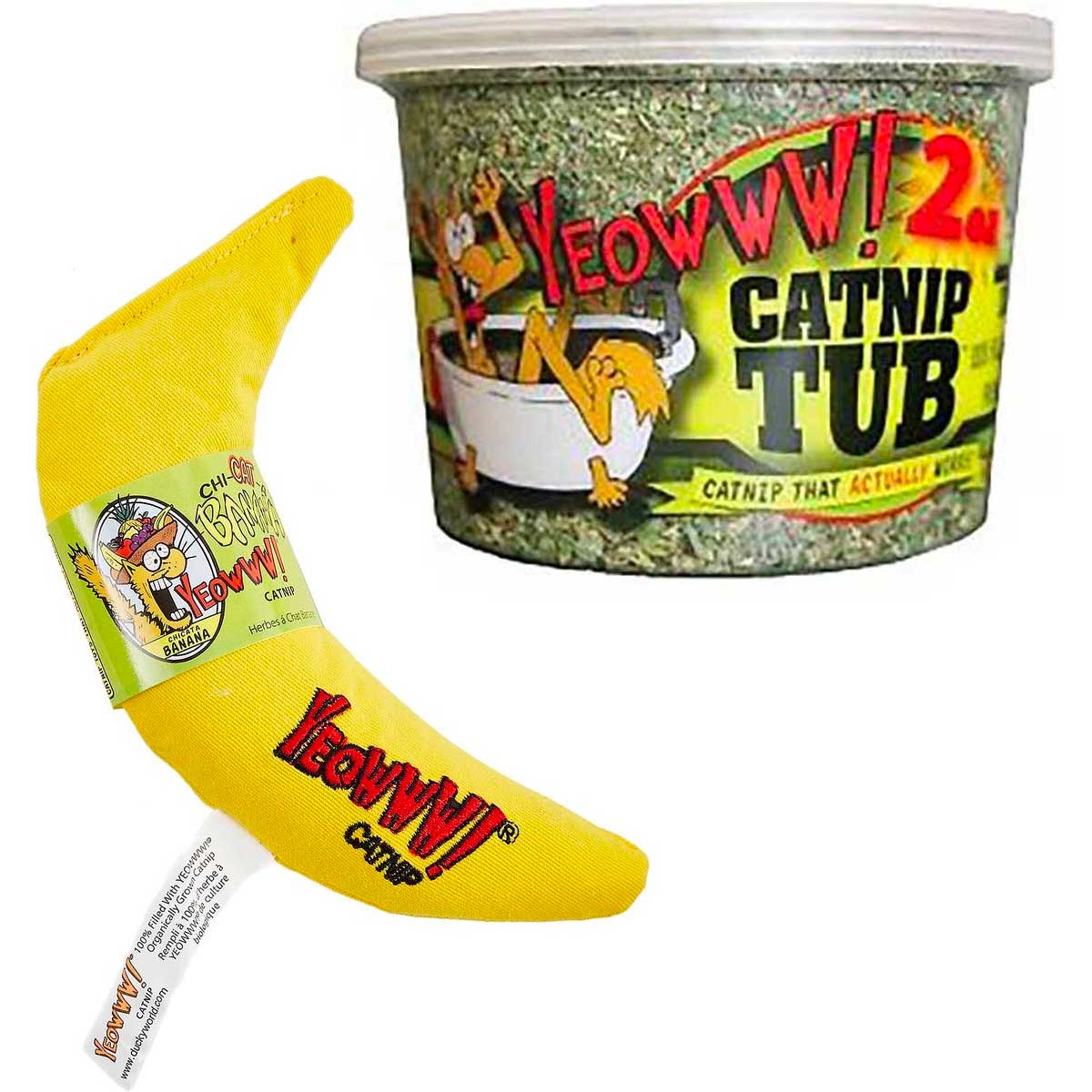
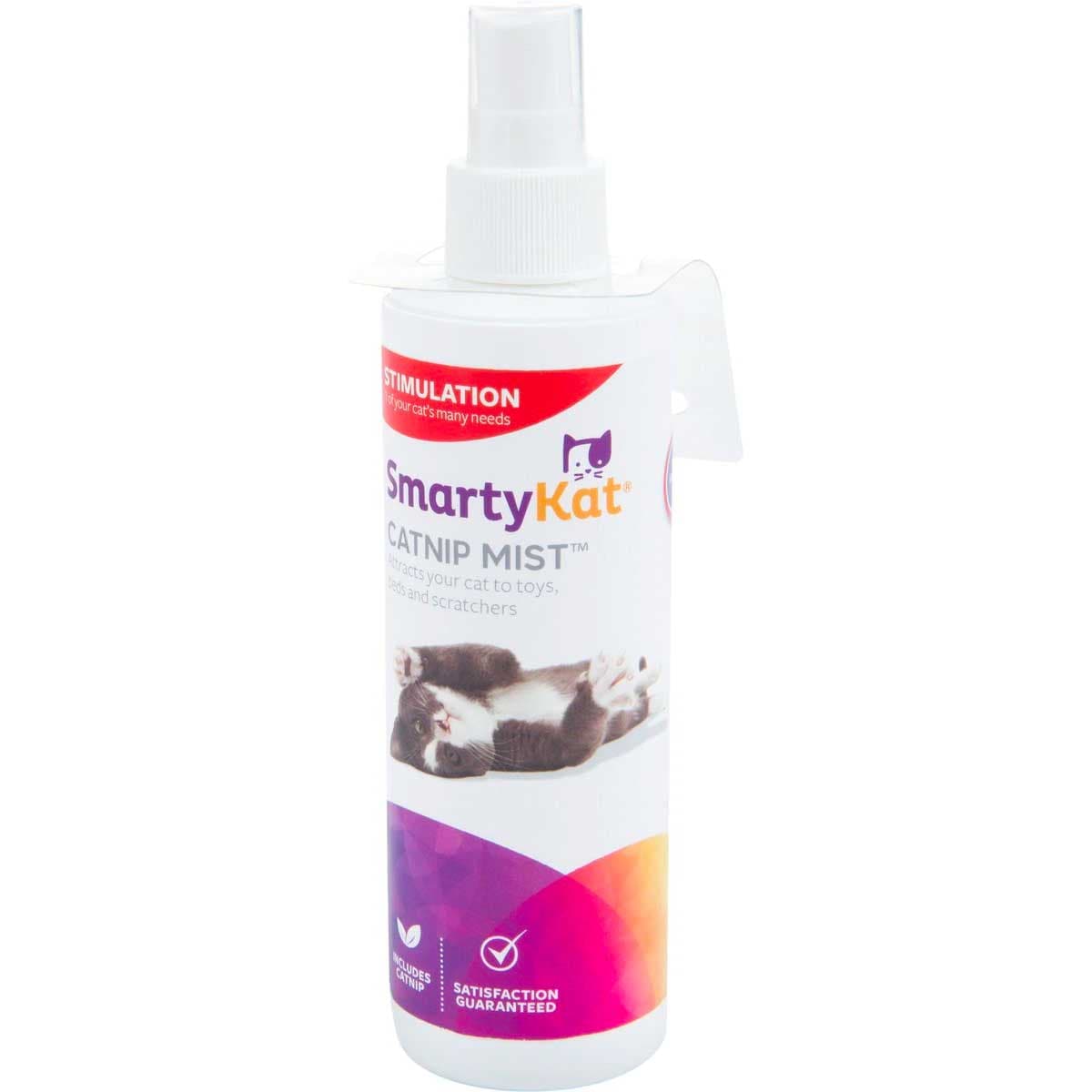
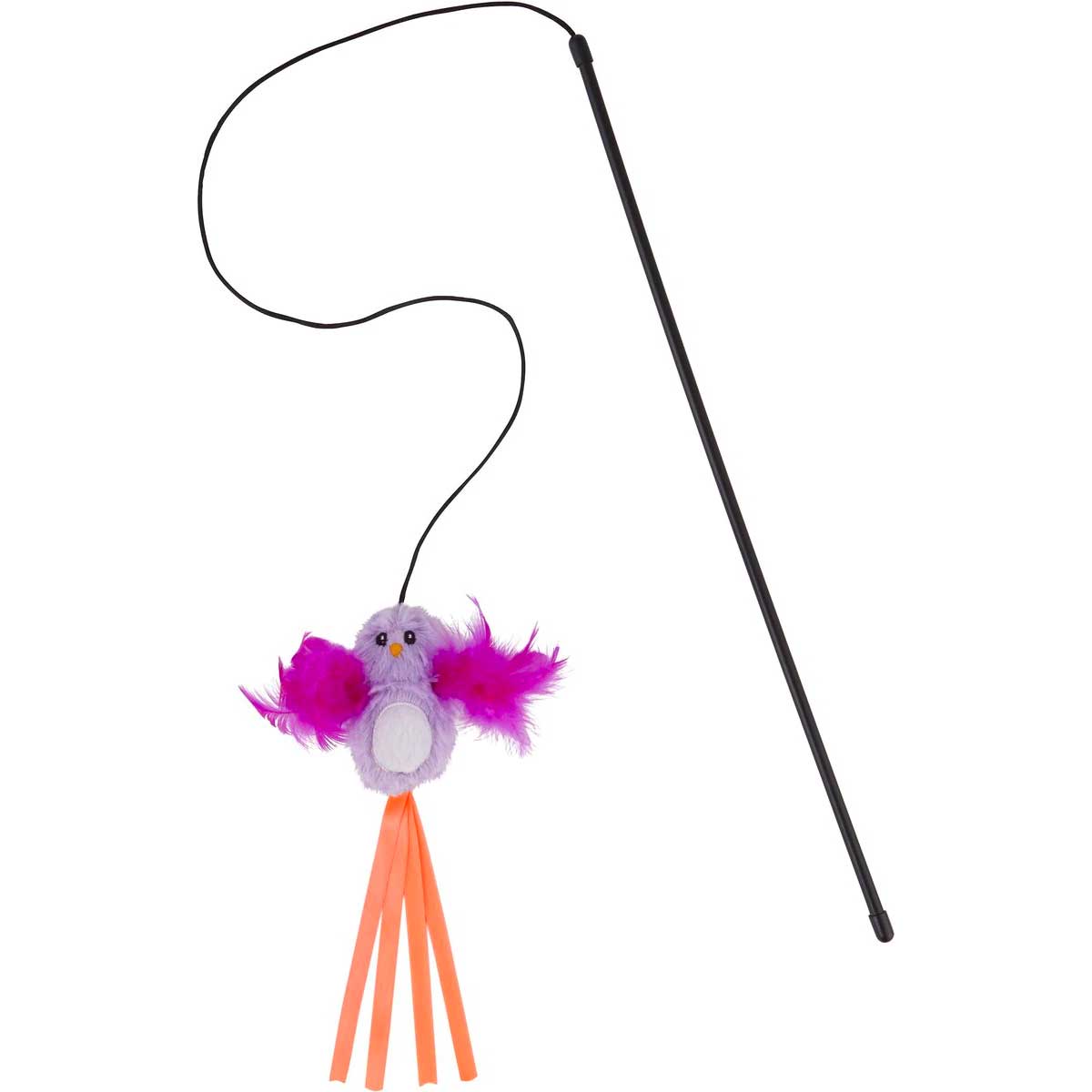
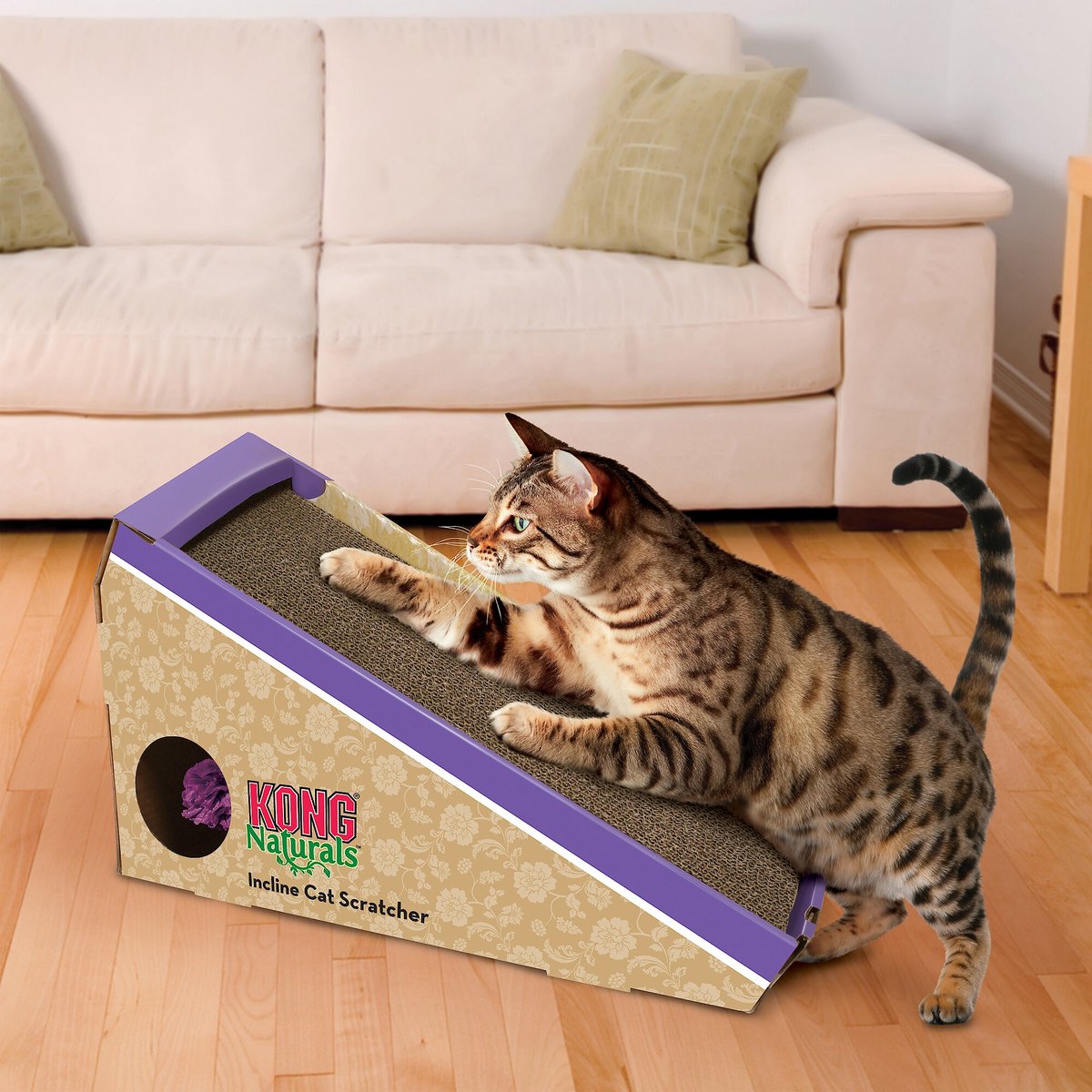
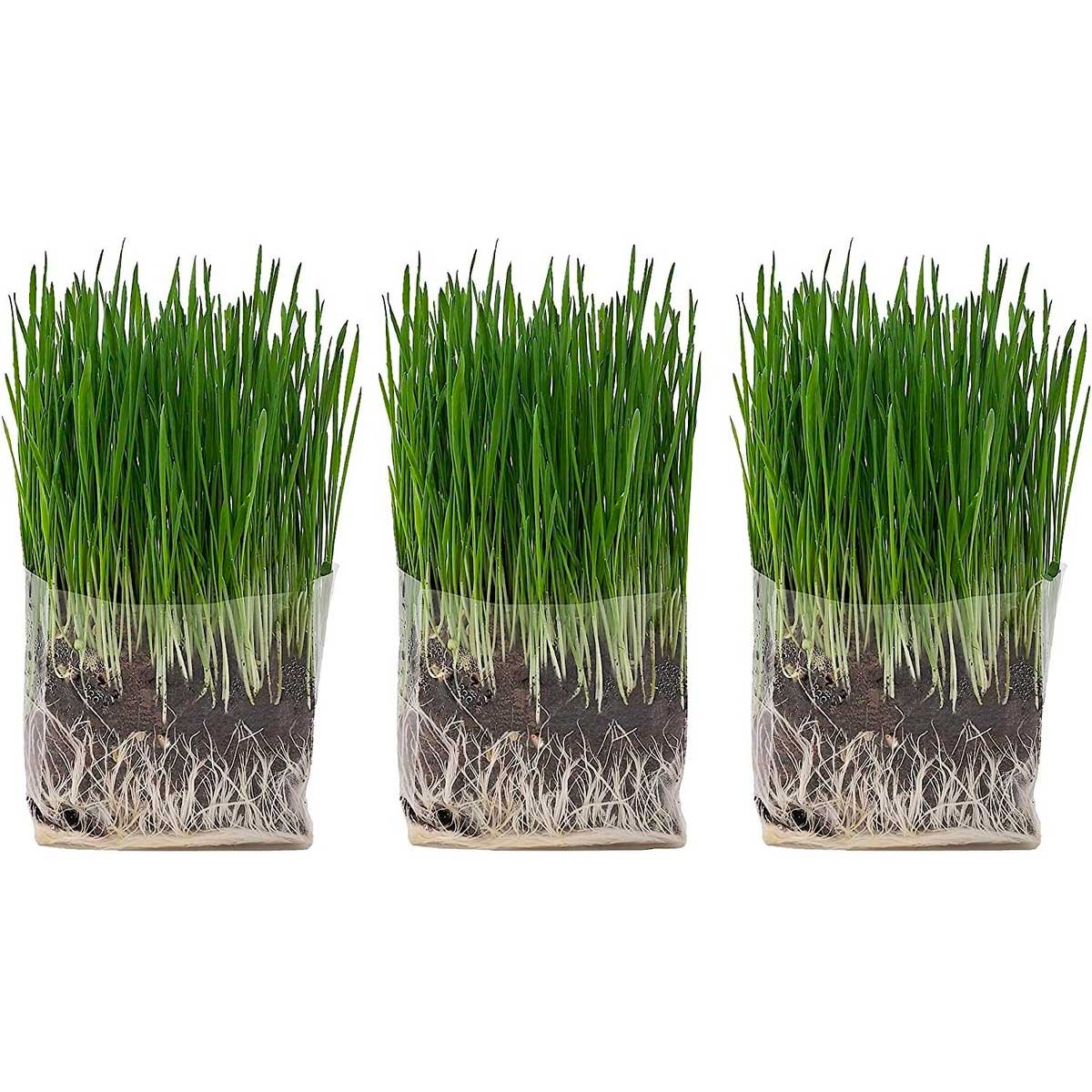
About Catnip Sprays and How Much to Use
Typically catnip sprays are a less potent form of the Nepetalactone oil in a mister, so they're designed to deliver the appropriate amount in one to two sprays, according to Dr. Robinson.
If you think your cat would appreciate more or didn't get the expected result from the recommended amount, Dr. Robinson says it’s fine to give an additional one to two sprays. Any more than that is unlikely to enhance the experience until hours later in another session.
Beyond three to four sprays, you'll probably find that there's no increased enjoyment because your cat's olfactory system have already been activated. “Any more sprays than recommended are not toxic or harmful, but are really just a waste of the product. Instead, try to wait a few hours for any effects to wear off, and consider exposing your cat again for an entirely new sensory experience.”
What Does Catnip Do to Cats?
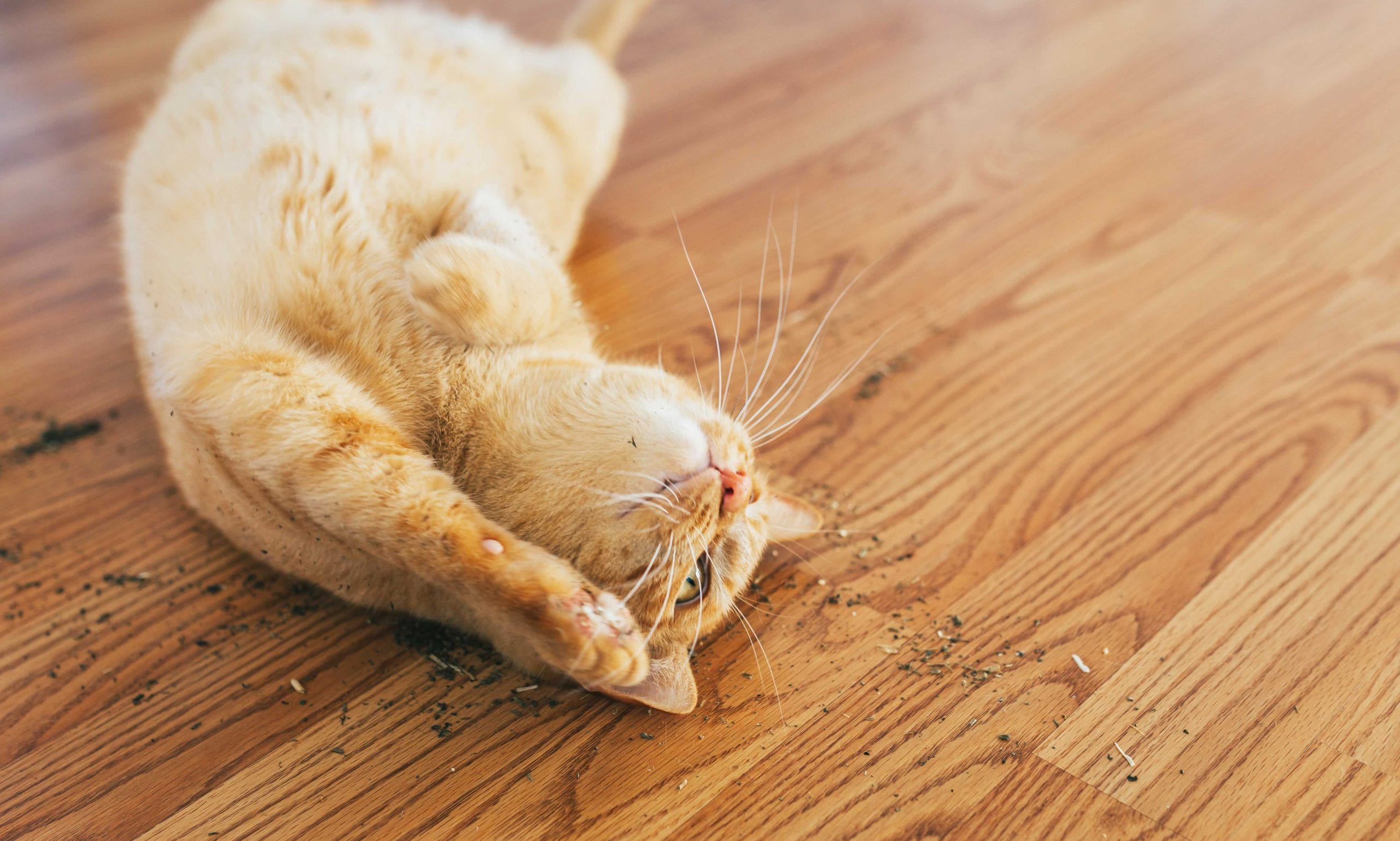
Catnip stimulates a cat through nepetalactone oil, contained in the catnip plant’s leaves, stems and seeds. This oil is detected by the olfactory system, channeling signals directly to the brain. It must be vinhaled for the oil to be detected by the gland.
Some cats in their catnip euphoria may eat the leaves, others may drive their nose into it. But when you see them raise open their mouths and flare their nostrils like they've just caught an awful smell, that's a sign they're engaging their olfactory system. Typically, their euphoria will last for 10 minutes or so.
The stimulated olfactory system has been bombarded with stimuli and ultimately becomes burned out. This is often why cats will lose their interest in the catnip. After the gland has had time to calm down again, they're usually ready to return to it after 30 to 60 minutes for a repeat experience.
What Are the Benefits of Feeding Cats Catnip?
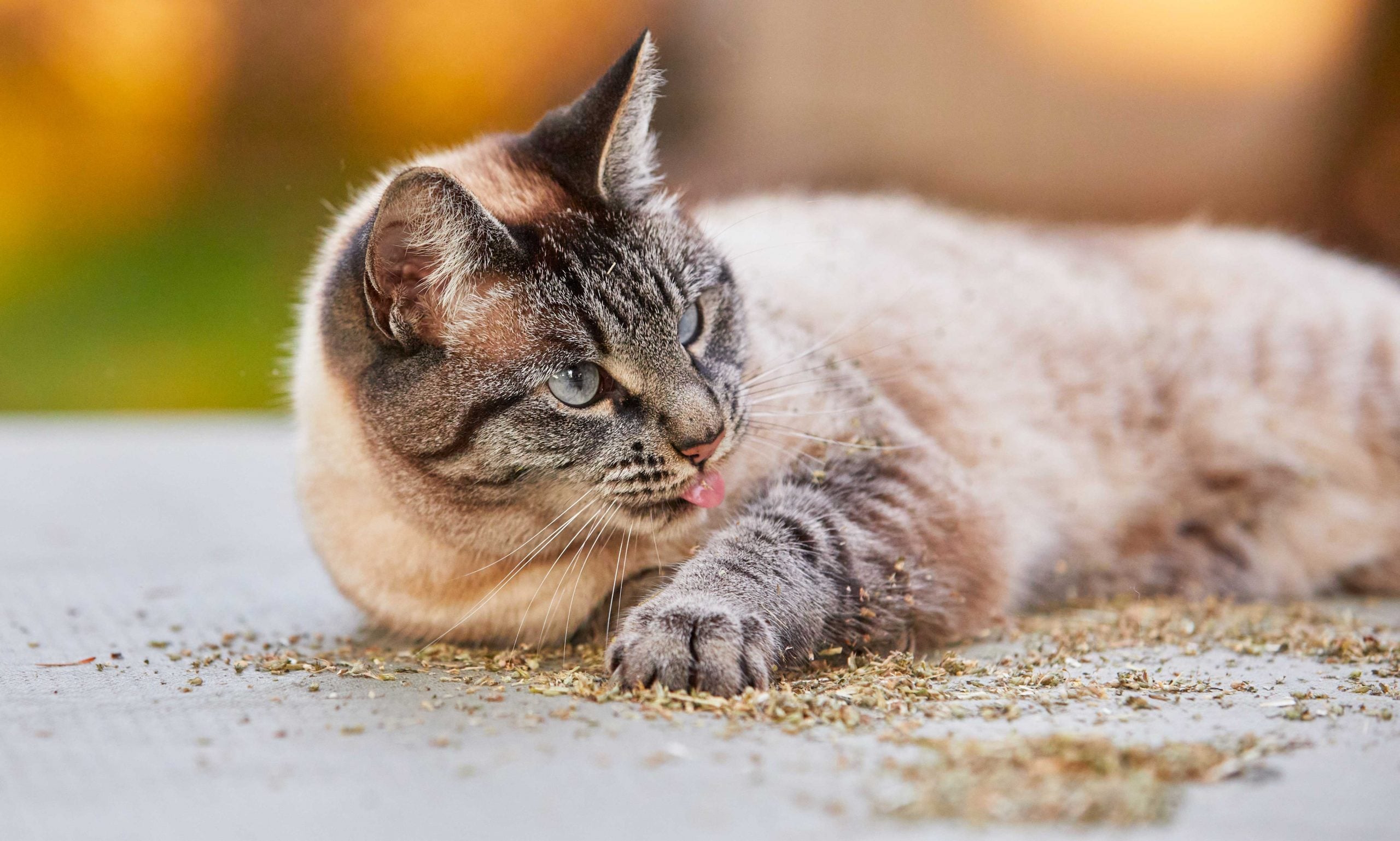
The benefits of feeding a cat catnip include:
- It reduces anxiety and provides entertainment. “Catnip can serve as a holistic remedy to anxious moments, enhance positive associations to objects or events/experiences, or simply serve as an excellent source of regular entertainment,” says Dr. Robinson. Because of its calming effect, he says some of his clients put catnip in their travel carriers when they transport their cat in the car for a veterinary appointment.
- In controlled amounts, it is safe. A member of the mint family, catnip is a plant whose scientific name is Nepeta cataria.
Is Catnip Safe for Humans?
Yes, humans can ingest catnip, as it’s been used in medicinal teas for humans in many cultures, Dr. Robinson says.
“However, like most things, it is never good to ingest something excessively,” he adds. “If a human consumes excessive amounts of catnip, it can lead to headaches and nausea.”
- Catnip can be messy. Have a vacuum handy after your cat is done playing.
- Young kittens and even some adult cats may not respond to catnip. Catnip doesn’t work for all cats, according to Dr. Robinson. It's believed that about 60 percent of cats will respond to it, but that leaves 40 percent who don’t. Cats won’t typically develop a response to catnip until they are 6 to 12 months old. A response to catnip is thought to be based on genetics.
- Catnip can cause a heightened sense of aggression in some cats. If that aggression moves beyond playfulness and becomes threatening, with your cat exhibiting behaviors such as hissing, biting, etc., Dr. Robinson recommends leaving the room for 15 minutes while your cat comes down off of the stimulation. When you return, remove the catnip treat in a calmer moment.
- Catnip can cause stomach issues in some cats. If your cat displays any gastrointestinal issues after ingesting catnip (more likely if they eat too much of it), try a catnip spray. Dr. Robinson suggests a catnip-infused toy to prevent your cat from ingesting the mint. Freshly grown catnip leaves are more likely to cause an upset stomach versus other varieties.
- Catnip could lead to an allergic reaction. Catnip in moderation is safe for cats, and it’s uncommon for a cat to have an allergic reaction to it, but Dr. Robinson warns that an animal can be allergic to anything, including catnip. “Since catnip is enjoyed around the face, I would typically monitor for irritation signs [such as] excessive prolonged sneezing, red itchy eyes with discharge, etc. If your cat were to show hyperventilation, loss of consciousness or seizures, then I would withdraw it immediately and consult with your veterinarian [to see] if there is any link to the herb,” he advises.
Why Do Cats Like Catnip?
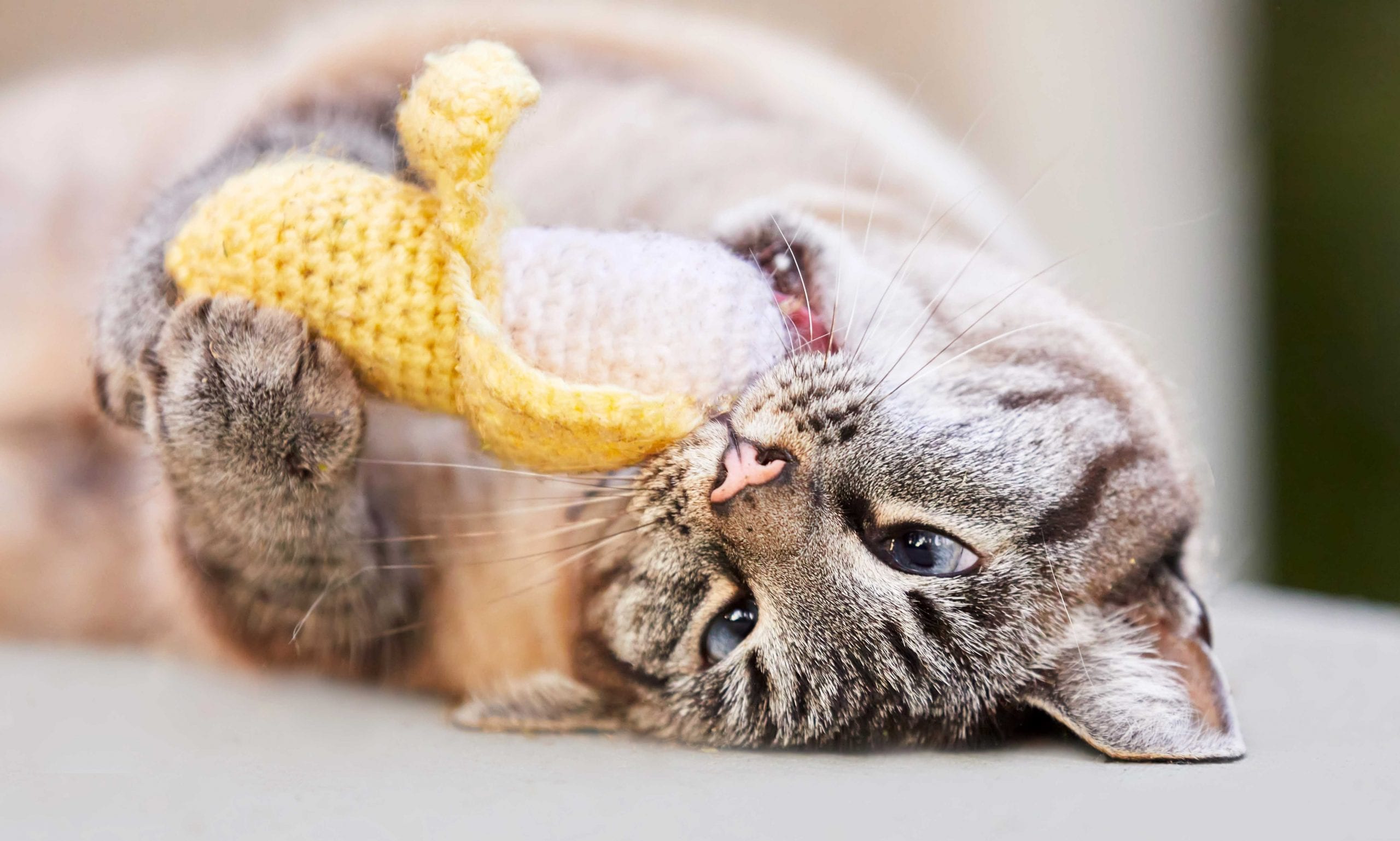
So, when a cat is triggered by the oil, “they often exhibit signs similar to a cat going into heat: rolling around, increased affection, play biting, etc.,” explains Dr. Robinson. He adds that even though only female cats go into heat, male cats can still be stimulated by this oil and exhibit these same signs.
While it’s widely thought that cats enjoy the overall state of euphoria and relaxation that the herb triggers, there is some variation in the response to catnip.
“While some cats may show affectionate emotions, others may be playful or even aggressive,” Dr. Robinson says.
But what about foods cats can't eat?
Share:
